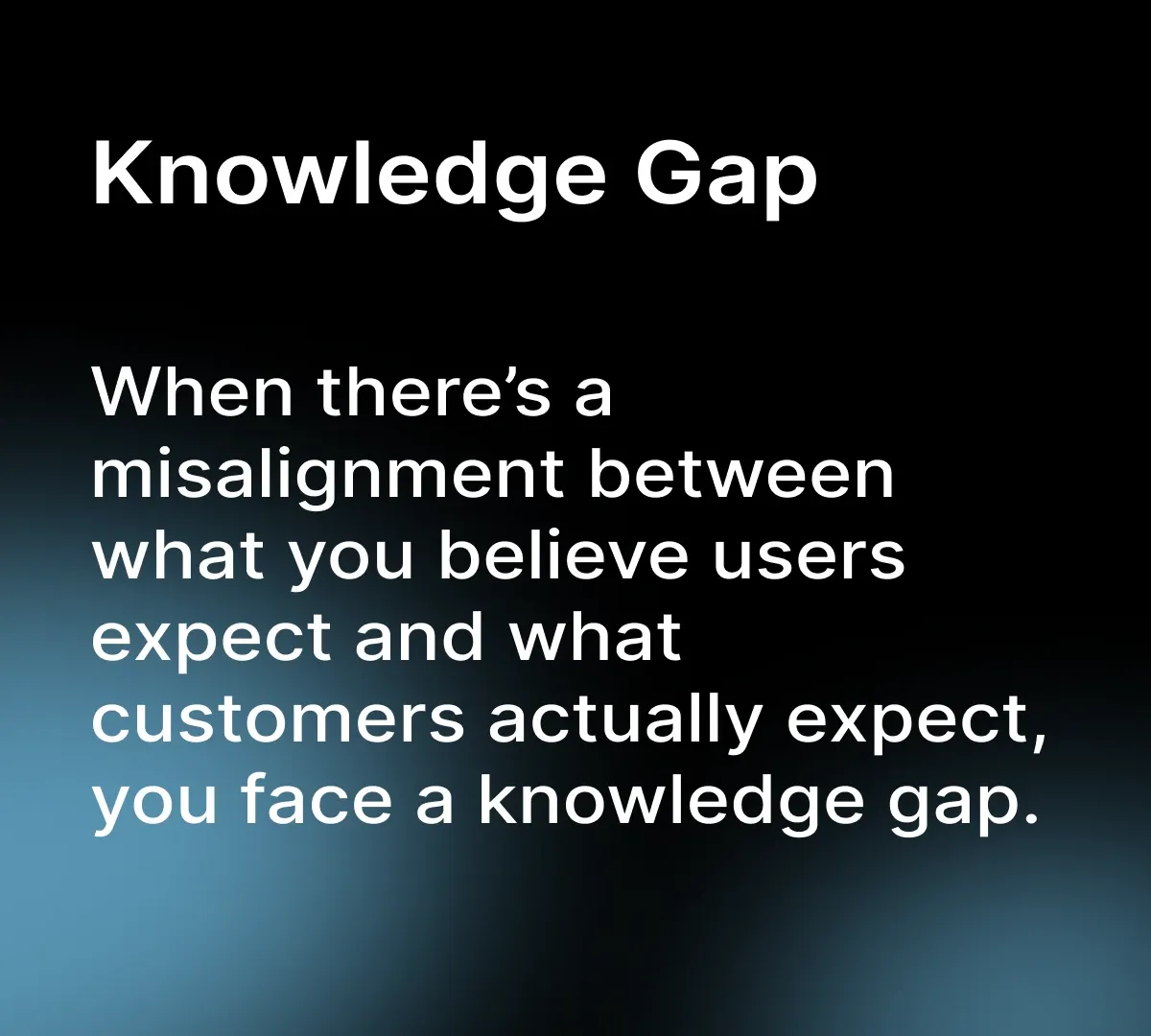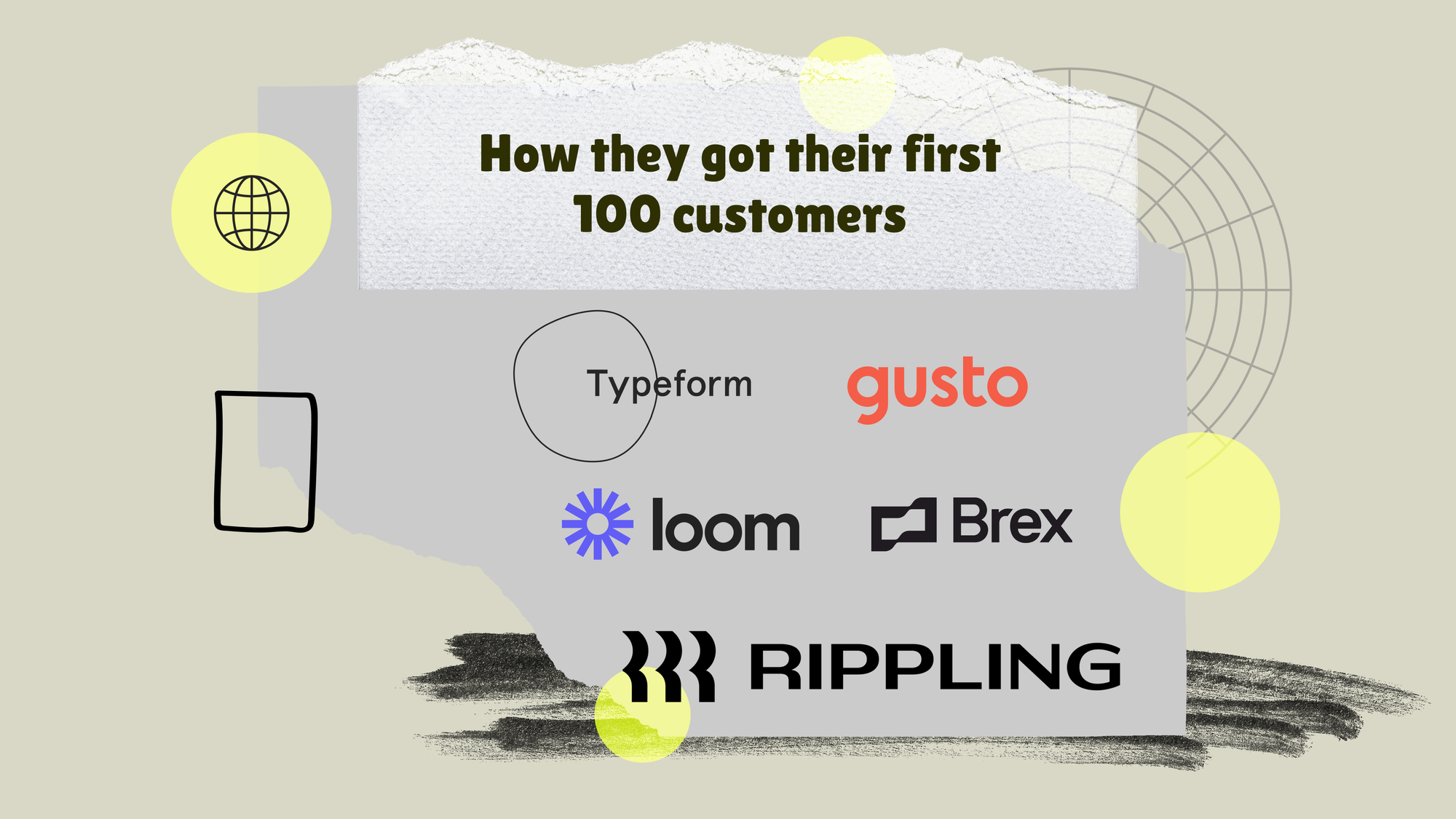One of the worst feelings in the world is when your high hopes are dashed.
No matter if it's because your favorite sports team lost, you didn't get into the college you expected to get into, or a car you buy fails to operate as you expect and has a ton of issues.
There's a mismatch between what you expected to happen and what actually happened.
Now that's life, and there's no changing it. Some things are bigger than us and out of control.
However, B2B SaaS product managers and leaders have more latitude in creating matching expectations and experiences.
When we fail to do this, we produce a gap.
This customer service gap represents the distance between your user's expectations of your product and what was actually delivered to them and the value they derived.
I want to discuss this customer service gap idea and offer a few solutions to close it, or at least improve it.
Digging into the customer service gap
Your user experience is made up of so many parts that it can be hard to identify what exactly is causing happiness and what exactly is causing friction. There are a billion tools that will help you measure every little data point and interaction in your product, but sometimes, it's helpful to just take a step back and think on a more foundational level.
What are the expectations my users have when they come into the product?
What are they trying to do?
What problems are they trying to solve?
What functionality do they recently expect to work seamlessly?
To answer those questions, you need to do some user journey mapping and build out great user personas to get into your users' heads. But even then, your understanding of your users’ expectations can fall short.
That’s because once they're in your product and interact with it, they begin to form a set of perceptions and reactions in judgments. These user perceptions make up the reality of your product and contrast with its expectations.
There will always be edge cases or different reactions than what you expected.
The gap between these expectations and your user's actual perceptions can form a customer service gap.
This gap can take many forms, including a policy gap where your outlined policies don't match the way you actually enforce them, a delivery gap where you have a standard of service that isn't fulfilled by your employees, or a communications gap where your sales and marketing folks overpromise on your product’s abilities.
But the most relevant gap in SaaS is the knowledge gap.

Knowledge gap
When there’s a misalignment between what you believe users expect and what customers actually expect, you face a knowledge gap.
Why does this happen?
One root cause can be a lack of market research and user understanding among your team. Perhaps you’ve failed to keep pace with your audience's personas and mentality and are relying on old ICPs.
However, one of the biggest drivers of this knowledge gap is a lack of more real-time, ears-to-the-ground input and feedback from your users. Sure, maybe you run some interviews and occasionally put out a survey on your product. Or maybe you even have an established NPS cadence.
But the reality is that it can be easy to let these collection processes get automated and ignored.
The data is unanalyzed or perhaps merely glanced over.
To close this gap, you need to have your finger on the pulse of your users every want, need, and frustration. We’ll talk a bit more about how to do this effectively later, but I first want to take you through a more general customer gap analysis model so that you understand how to approach these problems before you try to solve them.
Customer gap analysis
In a customer gap analysis, you're setting out to identify the areas where the gap is being created, where expectations and reality are not aligned, and then close it.
Outlining your understanding of customer expectations
To start, you want to really understand customer expectations. This means more than the occasional market research or an initial user Persona build. You need to be extremely thorough with both initial in-depth research and interviews and follow-up feedback collection.
An important aspect of accurately outlining expectations within your personas is properly segmenting during onboarding. If you have a one-size-fits-all onboarding with no filtering or segmentation, you won't have clearly matching user data to your core user personas. Be sure to proactively ask for demographic, titular, and other information to inform your segmentation and your ability to tag expectations to specific user cohorts.
Gathering user perceptions
Once you're in the market and people are in the product you need to have a direct line of sight into their expectations and thinking.
Those reactions and thoughts for your customer perceptions, which we've talked about.
Compare, and identify the gap(s)
Now, you can compare your expectations against your perceptions and identify any gaps you face. In B2B SaaS, look out mostly for knowledge and communication gaps.
Close the gap!
You can create a clear action plan to tackle these gaps and solve the root problems. I'll explain more about that in a second.
One important thing to note is that this isn't a process you run once and then analyze and never use again. It's something you should do on a semi-regular cadence, and in fact, the more regularly you do this and the more real-time feedback you can get, the better.
How to effectively close your customer service gaps
So I've gone on and on about the importance of segmentation, user journey mapping, user personas, and more traditional product management tactics and strategies to ensure you understand your users and their expectations.
But if you look at the knowledge gap, one of the biggest issues that emerges is not in your initial expectations but in your ability to accurately gather, analyze, and act on your user feedback in-product, and then to act on it.
There are two ways to do this better:
In-app messaging
The first is to improve in-app messaging. We've seen our customers repeatedly use CommandBar for this.
First, they set up the right audiences to segment their users accurately.
Next, they create nudges, product tours, and other assets with smart targeting toward those audiences so that folks only see what's relevant to them. This increases response rate, data accuracy and breadth, and your general ability to tap into your users' psychology.
They then intake those data points and feedback and use it to inform their product changes better.
Copilot and user intent
While everything I just said is 100% accurate and helpful, I must admit that even at its best, in-app messaging sometimes triggers a negative auto-response amongst users. No matter how targeted, nuanced, or fun it is, there's an inherent desire to X out of any element that comes onto the screen (probably because we're all still scarred by insanely intrusive pop-ups we've experienced over the years, which we’re working to eliminate from the internet.)
When we launched our AI Copilot, we were hopeful we could help companies deflect tickets and save money. What has become very apparent is that the quality of the conversational UX and data on user intent, dead ends and frustrations, and success states has powered more than that. It's led to impactful data that informs product decision-making and helps illustrate your customer's gaps better.
For the first time, without a human in the loop, your user can explain their expectations, and you can then qualitatively and quantitatively see how clearly you can fulfill them.
Copilot routes them to an article that is helpful? ✅
Copilot answers in natural language and resolves the issue? ✅
Copilot has to fall back and your user reaches a dead-end? ❌
The powerful thing here is that you're still learning even when Copilot fails or your documentation is not up to par. You're still gathering data that informs your knowledge of these gaps and allows you to work to fix them.
You get this unique window into your users' desires and expectations in their own writing. Then, you can see how all of the assets and materials you've created to assist in meeting those expectations perform.
Turning a gap into a wow moment
It's one thing to identify some of your customer service gaps and another thing entirely actually to fix them. When you bring in a coherent user segmentation strategy and core user research knowledge with more targeted in-app messaging and an AI Copilot, you're better able to close these gaps quickly and, in fact, go above and beyond your user's expectations. You can seek to create a positive delta where you consistently exceed expectations and create moments of surprise, joy, and wonder for your users.















